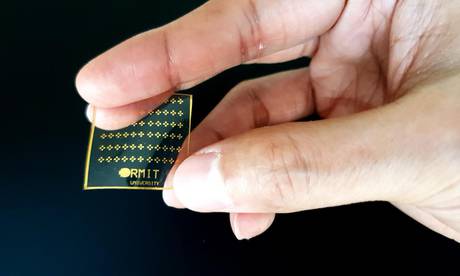Artificial skin is becoming more and more human: now it can also feel pain, reacting almost instantly just like our natural skin does.
This is demonstrated by tests conducted on a prototype developed in Australia, in the laboratories of Rmit University in Melbourne.
Its performance, described in an article in Advanced Intelligent Systems magazine, could pave the way for increasingly sensitive prostheses and robots, but not only: they even suggest that in the not too distant future this electronic skin could be used as a hitech alternative and non-invasive to skin graft grafts.
"We need further developments to integrate this technology into biomedical applications, but the fundamentals, ie biocompatibility and skin-like elasticity, are already there," explains study coordinator Madhu Bhaskaran.
The prototype of electronic skin that senses pain (source: RMIT University)
“The skin - continues the expert - is our largest sensory organ, with complex features evolved to send a barrage of warning signals when something hurts us.
Through the skin we continually perceive the things around us, but the reaction to pain is triggered only at a certain point, for example when we touch something that is too hot or too sharp.
No electronic technology has been able to realistically mimic the human sensation of pain, at least until now.
Our artificial skin - Bhaskaran points out - reacts instantly when pressure, heat or cold reaches a painful threshold ". This means that it is able to recognize" the difference between gently touching a pin with your finger or accidentally pricking yourself: it is a distinction crucial that has never been achieved before, "says colleague Md Ataur Rahman.
To achieve this, the researchers combined three technologies: first of all, elastic electronics, which made it possible to create a wearable electronic device, transparent, unbreakable and as thin as an adhesive;
then the temperature-sensitive coatings, a thousand times thinner than a hair and based on materials that transform on the basis of heat;
finally, electronic memory cells, which mimic the way the brain retains and recalls previously stored information.
In this way the electronic skin is able to react to the painful sensation with a speed comparable to that with which nerve signals travel from the natural skin to the brain.














